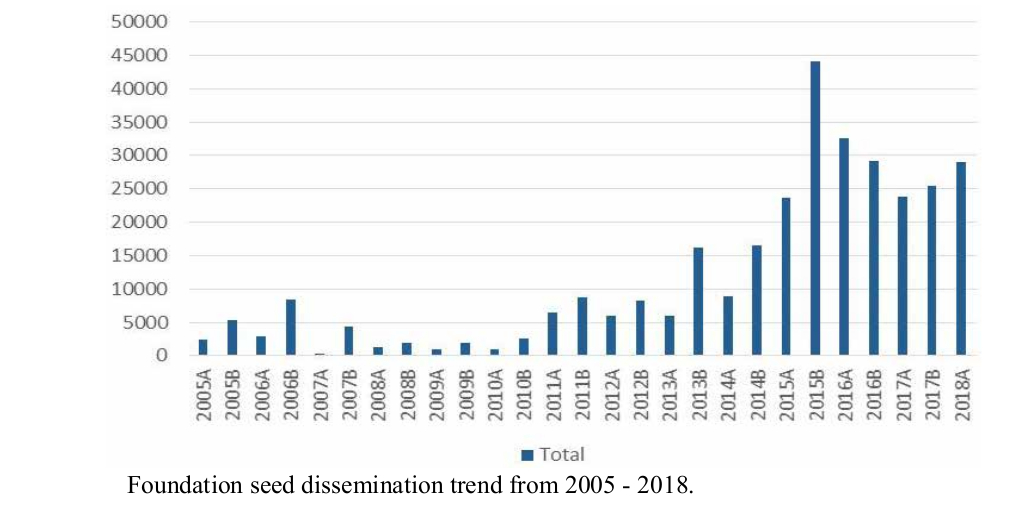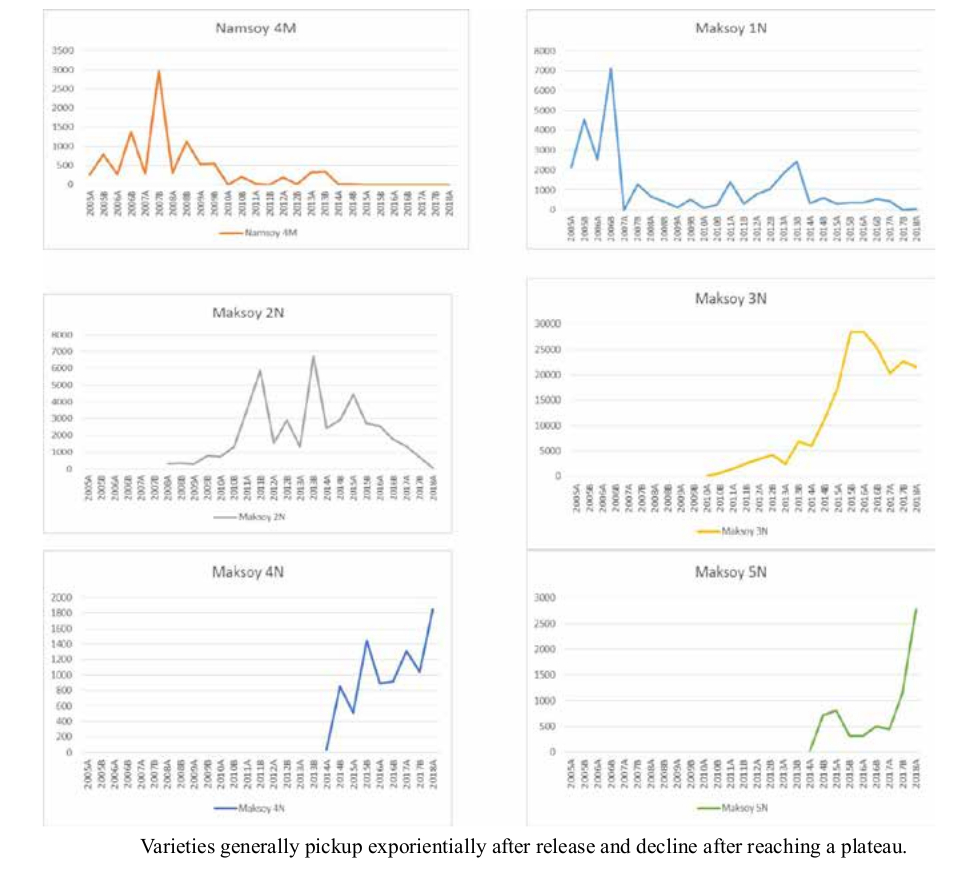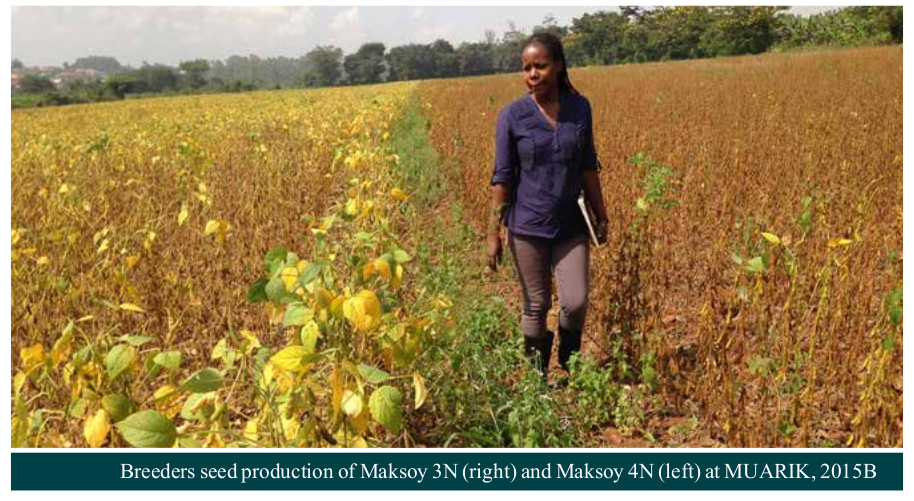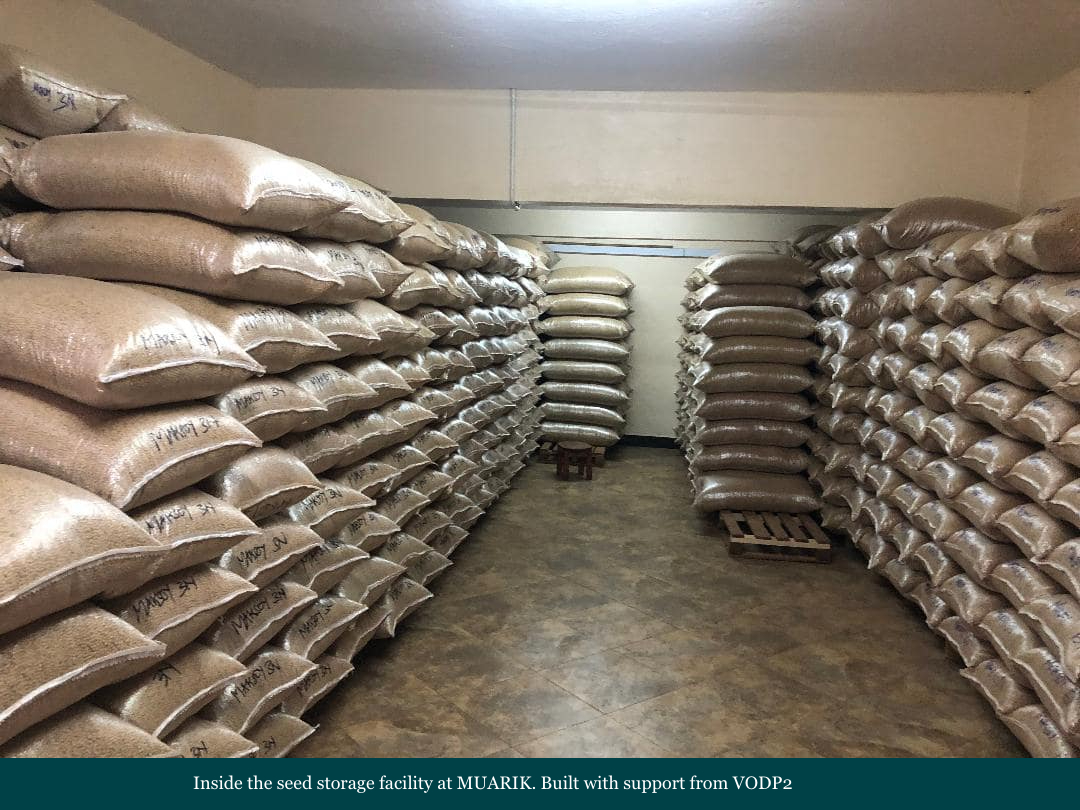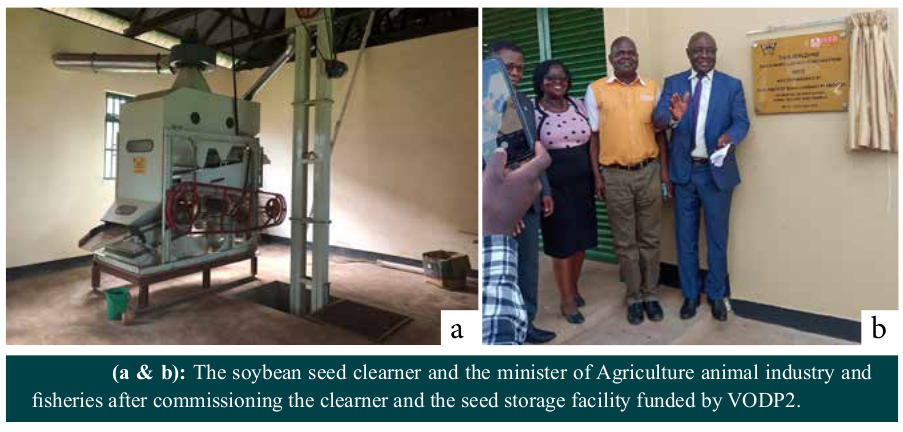Soybean Seed Systems
Seed Systems
MAKCSID has in the past 16 years supported various seed dissemination activities to avail new rust-resistant varieties to farmers. Over 300 tons of foundation seed has been supplied to different farmers and groups.
In a drive to promote soybean production in Uganda, the Centre for Soybean Improvement and Development has trained selected farmers’ groups in Mukono, Wakiso, Kole, Kamwenge, and Luweero districts in the production of quality seed. Seed multiplication of the varieties Maksoy 1N, Namsoy 4M, Maksoy 2N, and Maksoy 3N, Maksoy 4N, Maksoy 5N, and Maksoy 6N have been carried out every season since the time of their respective release. The summary of the Breeder and Foundation seed that has been disseminated via several seed channels to the communities is in the table shown below.
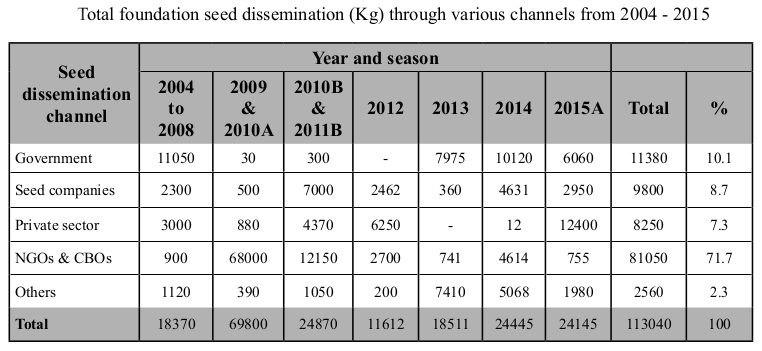 For this reason, the research team has involved the interested farmers’ groups in the multiplication and dissemination of the newly released soybean varieties. Farmers were targeted in their special interest groups and trained on how to produce viable quality soybean seed. They were supplied with these new varieties and each one of them was continuously inspected by researchers in collaboration with partnering Soybean Africa Limited throughout the season.
For this reason, the research team has involved the interested farmers’ groups in the multiplication and dissemination of the newly released soybean varieties. Farmers were targeted in their special interest groups and trained on how to produce viable quality soybean seed. They were supplied with these new varieties and each one of them was continuously inspected by researchers in collaboration with partnering Soybean Africa Limited throughout the season.
It is believed that if well conducted, this multiplication will be trickling down the new soybean seed varieties to most remote of farmers through the traditional farmer to farmer seed distribution and local seed businesses (LSBs). It is also planned that some farmers will eventually specialize in soybean seed multiplication as a commercial activity becoming suppliers to the surrounding farming communities.
The research team has worked with various stakeholders to ensure constant supply of the new varieties in the informal seed system as illustrated below. The research team has worked with community- based organizations (CBOs), non-governmental organizations (NGOs) and other stakeholders in the soybean value chain. In particular, CBOs and NGOs accounted for 50% of nationwide dissemination of foundation seed to other stakeholders for multiplication.
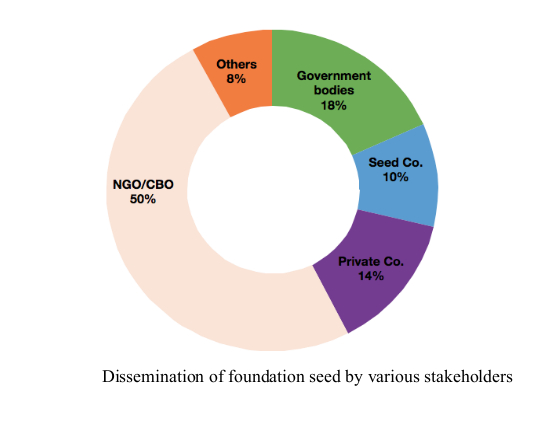
Varieties Maksoy 3N and Maksoy 2N are the most demanded, accounting for 46% and 26% of the breeders and foundation seed disseminated respectively. Maksoy 4N, Maksoy 5N and Maksoy 6N were least demanded because they are the most recent releases and require further promotional activities as illustrated below
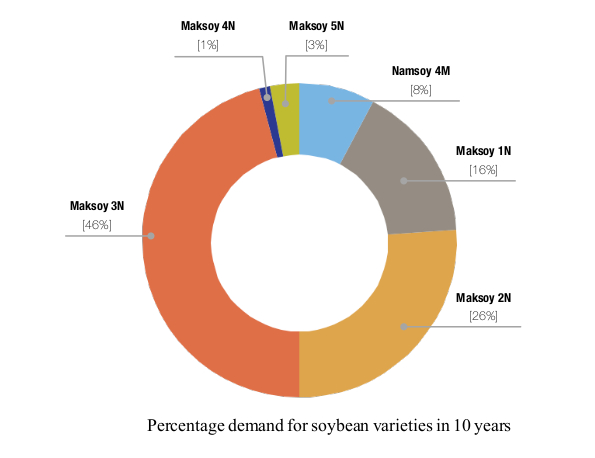
The Centre for Soybean Improvement and Development has produced over 300 tons of soybean foundation seed in the last 14 years for the different varieties.
Soybean Africa Ltd (SAL) is a private company established in Uganda and signed a MOU with with Makerere University through the Centre for Soybean Improvement and Development (MAKCSID), to ensure accessibility of improved soybean varieties to farmers. Through this collaboration over 300 tons of foundation seed of Maksoy varieties developed by Makerere University have been disseminated, thereby contributing to improved access of soybean foundation seed to the entire soybean value chain in Uganda. Since SAL has a strong capacity in marketing, working with CAES-MAKSCID will have great synergies in ensuring development of more varieties by MAKCID and their dissemination in Uganda and the region for the benefit of farmers as illustrated in the figure below.
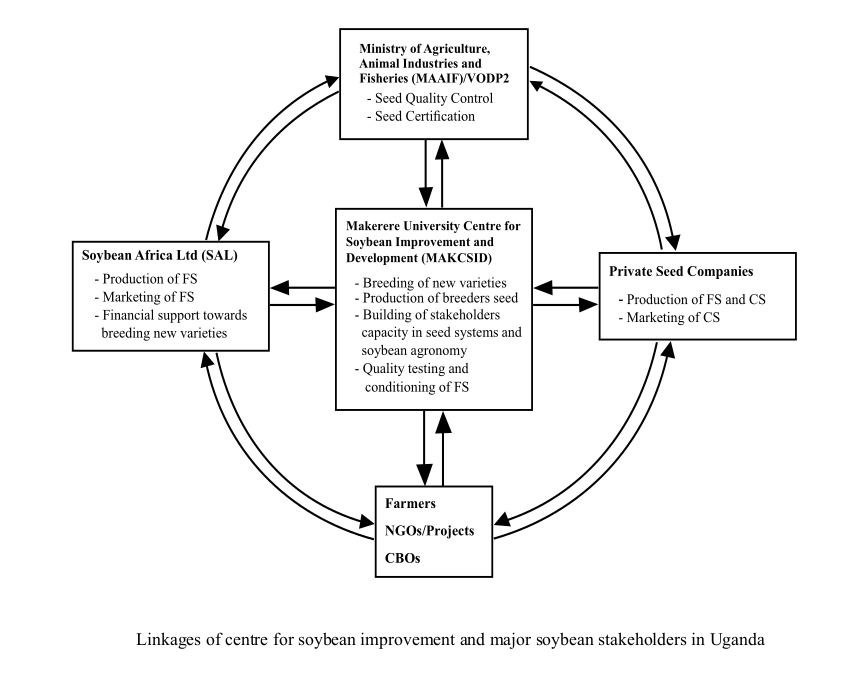
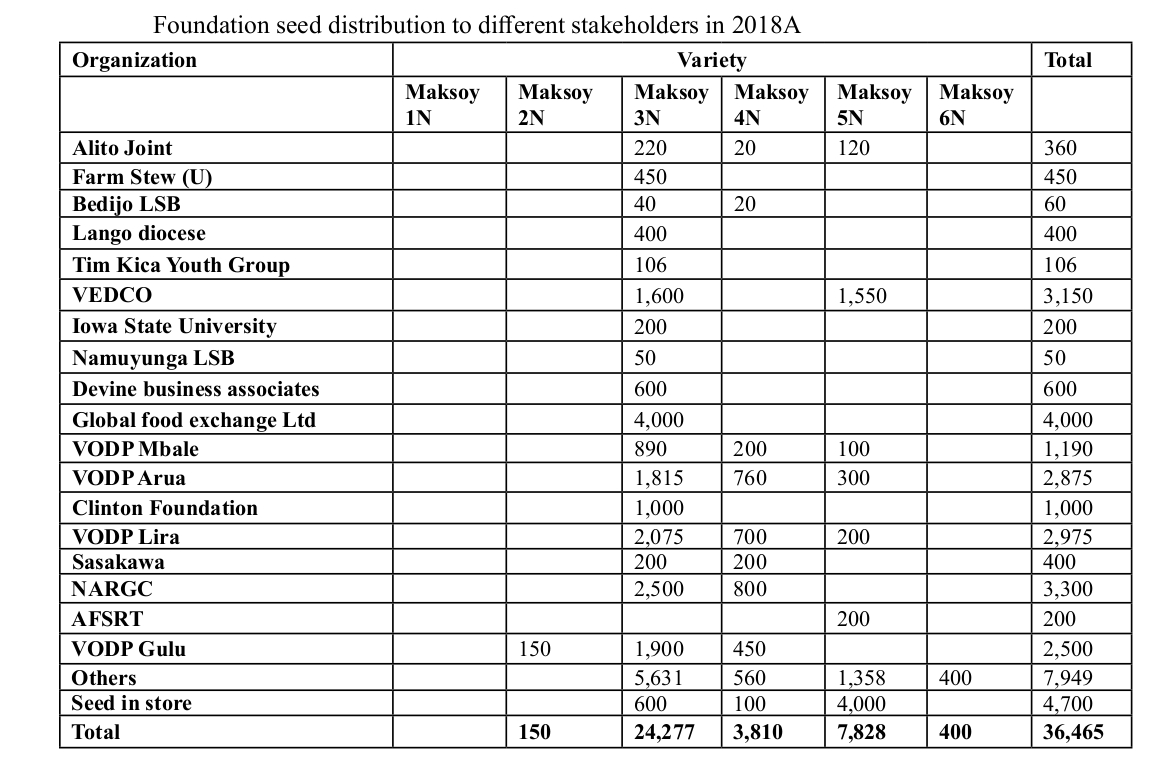
Soybean variety life cycle
Our breeding program released the first 2 varieties in 2004, followed by others in 2008, 2010, 2013 and 2017. We observed that performance and demand for these varieties decline with time. For example, demand for varieties, Maksoy 1N and Maksoy 2N have shown steady decline and are now produced in small quantities. This may be attributed to pest and disease resistance break down over time which lead to low productivity of these varieties. In general the varieties pick up exponentially after release and decline after reaching a plateau, as illustrated in. The exponential growth for Maksoy 3N, released in 2010 has superceded the rest of the varieties and its popularity with growers is still growing. These results suggest that breeding effort is a continuous process to insure against varieties getting obsolete. The breeding process also aims at development of varieties with different traits so that the growers may have choice.
